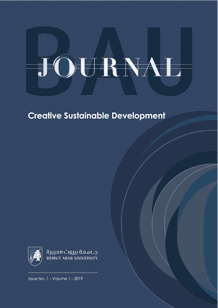Volume 1, Issue 1 (2019)
GUEST EDITOR MESSAGE
I am writing this preface from Barcelona just before the beginning of one of the most important events in the world that tries to debate around the knowledge, experiences and contact with the future of the cities in the planet, Smart Cities Expo World Congress. The concept Smart City is not more a trend and it has been converted into a strategic vision by the governors that are walking – in some places, they are running- into a more rational and efficient use of natural, human and financial resources, to get a better life quality level for their citizens. In just five years, something similar has occurred to BIM. Building Information Modelling has moved from a theory to a reality.
AECO sector is convinced of its transformational powers - its ability to drive efficiencies (let’s remember this concept that appears again), reduces costs and add long-term value to the development and management of built assets- and now we meet in an academic journal to trash out a strategy for its implementation.
Nineteen years ago, 19 architects from Barcelona gathered to fund a new School of Architecture where could be included the concept of Sustainability. I was responsible of that issue and my decision was not to include the term but to base all the school in that concept. We were fortunate to have the possibility to create the first Department of Sustainability in one school of architecture in Spain. It is now, two decades after, that Sustainability has achieved its own weight in the society. My grandparents know what is its meaning and my sons and daughter too. They do not still know that that radical concept should focus on process, collaboration, discovering what data is and how to create, develop, validate and use it. This brings us to a new level of sustainability data management; let us call it CIM, City Information Modelling. A concept that reverts from BIM to what a smart city means. If BIM is 50% technology and 50% collaborative processes, CIM demonstrates that the capacity and necessity of a global integration to build new city projects makes real innovative initiatives. Initiatives that have to have a core spirit: the 2030 Agenda for Sustainable Development and its goals. Let us called it Sustain-ability. The focus of this new academic Journal.
Prof. Dr. Ignasi Pérez Arnal, Former Chair of Sustainable Architecture Studies at EsArq UIC, Barcelona, Spain CEO of BIM Academy.es
Articles
IMPACT OF BIM ON BUILDING DESIGN QUALITY
Khaled Sadek, Ibtihal El-Bastawissi, Rokia Raslan, and Samer Sayary
THE APPROPRIATE BUILDING MATERIALS FOR ENERGY SAVING IN DIFFERENT CLIMATE ZONES IN EGYPT
Eslam M. Elsamahy and Mary Felix
IMPACT OF CONTAMINATED INTERIOR FINISHING MATERIALS ON THE EDUCATIONAL BUILDINGS
Osama Omar and Nael Al-Sarrag
HERITAGE CITIES AFTER WARS: BETWEEN TRADITION AND INNOVATION - A CASE STUDY OF BEIRUT IN LEBANON
Mary Felix
ESCAPE ROUTE DESIGNS AND SPECIFICATIONS FOR OFFICE BUILDINGS - “CCIAT” BUILDING AS A CASE STUDY
Mostafa El-Hefnawi
SIMPLIFIED TECHNIQUE FOR REMOVAL OF PREFABRICATED THREADED POSTS
Mohammad M. Rayyan and Ammar M. Alwaely
EVALUATION OF AN EXPERIMENTAL SCREW-RETAINED RETRIEVABLE CROWN VERSUS CONVENTIONAL CROWN DESIGN
Mohammad M. Rayyan, Ahmed Naguib M Hussien, Hanan A. Naguib, and Hiba A. Makarem
INTERACTIVE PLAYSCAPES: EXPLORATIVE DESIGN AND ROBOTIC FABRICATION TECHNIQUES
Chadi El Khoury and Rasha Sukkarieh
THE CRIMES OF CHILD PORNOGRAPHY IN LIGHT OF SUSTAINABLE DEVELOPMENT “LEBANON AS A MODEL”
Tarteel Darwish
TOWARDS A CREATIVE SUSTAINABLE PROMENADE IN INFORMAL SOUK ARCHITECTURECASE STUDY: MAR ELIAS CAMPS, IN BEIRUT, LEBANON
Maged Youssef and Farah Mefleh
REITERPRETING THE TERRITORY-FRAGMENTATION THROUGH CREATING CULTURAL PROMENADECASE STUDY: POSSIBILITY TO REINTERPRET ZOKAK EL-BLAT DISTRICT
Maged Youssef and Sarah Abou Shahine

Issue Editorial Board
- Professor of Architecture, Urban Design and Planning Dean, Faculty of Architecture - Design & Built Environment, BAU
- Prof. Dr. Ibtihal Y. El- Bastawissi
- Former Chair of Sustainable Architecture Studies at EsArq UIC, Barccelona, Spain
- Prof. Dr. Ignasi Perez Arnal
- Associate Professor of Architecture and Environmental Design Faculty of Architecture - Design and Built Environment , BAU
- Assoc. Prof. Osama Omar
- Professor of Architecture and Urban Design Faculty of Architecture - Design and Built Environment , BAU
- Prof. Ayman Afify

